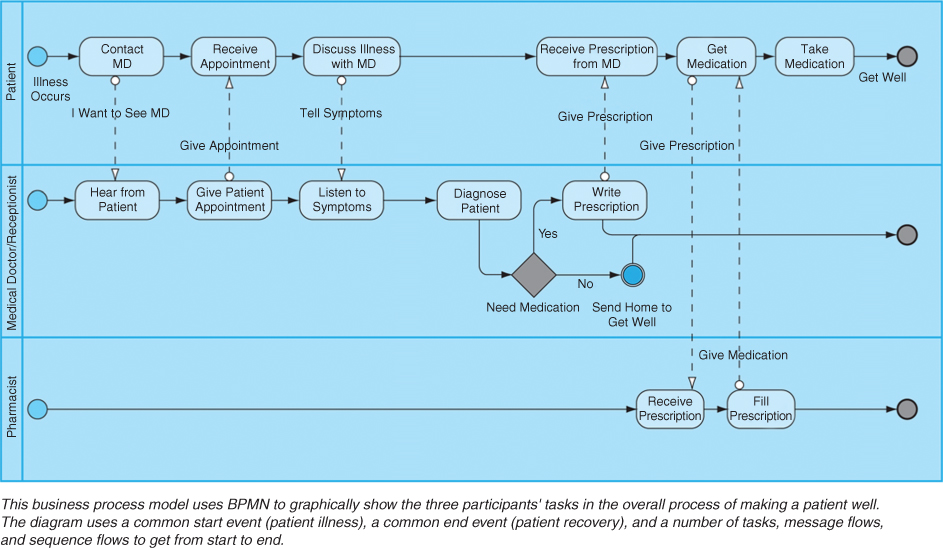Using TSI to Introduce BPM
As discussed earlier, a fictitious business case is presented in the appendix. It is used in this section to provide examples of BPM. We will now turn to the usage of BPMN. Several extensions of basic BPMN will also be introduced. The process map was shown earlier in this chapter, and we will now turn our attention to process diagrams.
Exhibit 7.9 Patient, Doctor, and Pharmacist Model

Creating Business Process Models
One of TSI's core competency processes (customers purchase tickets or—from TSI's vantage point—sell tickets to the customer ) will be used to create a business process model. This diagram will provide extensions to two previously discussed graphic elements, the end event with a message and the annotation. This process will take a customer-centered view (i.e., the customer will initiate the transaction and drive what happens), and the customer will select a show, a venue, a date, and a time. Once the customer provides his or her credit card information, TSI takes that information and attempts to charge the credit card.
TSI passes the credit card information to a credit card company that attempts to charge the card. If the card is valid and has available credit, the card is charged and TSI prints the tickets. The tickets can be printed either at a kiosk or on a customer's computer printer if the purchase is being made through TSI's website. ...
Get Business Intelligence Applied: Implementing an Effective Information and Communications Technology Infrastructure now with the O’Reilly learning platform.
O’Reilly members experience books, live events, courses curated by job role, and more from O’Reilly and nearly 200 top publishers.

